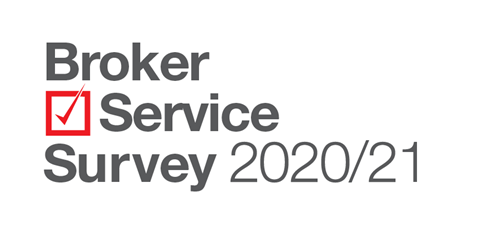Insurance Times speaks to LexisNexis Risk Solutions about the challenges ahead for brokers operating in the personal lines market

While the Insurance Times Personal Lines Broker Service Survey is collecting responses from UK brokers, we speak to LexisNexis Risk Solutions on five key areas of service important to brokers.
Brokers operating in the personal lines market were already facing pricing challenges prior to the pandemic, how can data help them meet the changing needs of their customers while delivering the right risks to their insurer partners?
This really comes down to having the most holistic view of the customer or consumer, crucially using data that is derived from their insurance history – past policies, past claims, past quoting behaviours in combination with other predictive data sources. This has become much easier for brokers within the last 12 months with access to the widest choice of data at point of quote fed directly into their workflows which can help improve their opportunities to quote and place business on behalf of their panel.
For example, brokers using public records data alone may be reluctant to quote because they can’t establish evidence of the customer’s insurance specific history, but when you bring in data attributes derived from an individual’s policy history we find brokers see a circa 10% uplift in their ability to quote.
New attributes specific to that individual’s insurance history can identify cancellation risks in motor, for example. We’re just about to launch new attributes in relation to COVID-19 enabling brokers to factor for changes in policies such as cancellations and gaps in cover that were a direct consequence of the pandemic, not of overall behaviour, helping the market to continue to treat their customers fairly.
Brokers excel in developing niche propositions in personal lines – how do you think this will evolve based on how consumer habits have changed?
I think brokers will be keen to explore more ways to segment their customers using data enrichment to respond to their individual needs. This could lead to an increased focus on identifying cross-sell and add-on opportunities such as key-cover and the use of affordability assessments to help determine payment options for premiums. I also believe they will want to play an increased part in helping customers mitigate risks.
In home, this could be through the use of real–time perils data to warn of storms and floods, or using industry contributed claims data to understand how they could support customers in avoiding claims through the use of specific products or initiatives.
In motor, driving habits have changed as a result of more people working from home – brokers will see a strong opportunity to support customers who are adding more named drivers to policies, if they cut down the number of cars owned by the household. This is likely to create demand for increased insights around named drivers to reduce the risk of fraud, including fronting.
I also think that broker interest in vehicle-derived data insights – both on the presence of Advanced Driver Assistance Systems (ADAS) features and on how the vehicle is driven will continue to grow, not just as an outcome of the pandemic but as a means to price customers more fairly based on the data on and from their car and the potential safety and claims benefits as a result of having them.

The personal lines insurance landscape is evolving. Click here to have your say and you could win £250 John Lewis vouchers. Brokers how well have your insurance partners supported you over the last 12 months?
Do you think there is a greater opportunity for the market to offer a more joined up ‘one stop’ solutions for customers – for example car, home and commercial van insurance under one policy/broker brand? What are the barriers to making this work?
There is certainly an opportunity to offer a one-stop service – the major challenge for the market however is customer data management. You need to know with confidence whether or not the individual to whom you are marketing a new proposition, writing a policy or managing a claim has had any past relationship with your business – in any line of business.
There has been an influx of merger and acquisition activity, which has meant that customer data is often stored in different silos, creating a real headache for brokers to create a ‘single customer view’. For example, is John Smith at 10 Acacia Avenue, London, who has applied for motor insurance today, the same JK Smith at 10 Acacia Avenue, who had a home insurance policy with the brand 4 years ago? Or is it the same J Smith who had a small commercial van claim against one of your policyholders last year? This is a big issue that we’re hoping to solve using linking and matching technology and our unique identifier LexID®.
There has already been a great deal of debate about how motor insurance underwriting and pricing could evolve in response to the changes in car use. At the same time, we are seeing developments such as the ALKS consultation as safety systems on cars become more common and increase in sophistication. What are the next data innovations to help the broker market fine tune their pricing in motor in response these dynamics?
Brokers are already testing LexisNexis® Vehicle Build, a new solution to better evaluate specific Advanced Driver Assistance Systems (ADAS), to support pricing and underwriting. To date, it has been a challenge for insurers to identify exactly what ADAS features a specific vehicle is equipped with when writing a motor insurance policy. This is because each car manufacturer has created their own unique terminology, definitions and naming structures – sometimes releasing multiple features within the same model year. In addition, many items are chosen as optional extras when a vehicle is purchased from new.
To address this challenge, we have developed an ADAS classification system using machine learning to scan millions of lines of car manufacturer vehicle data to logically sequence and classify vehicle safety features and component’s intended operation or purpose.
This classification system provides the foundation for LexisNexis® Vehicle Build. Access to vehicle safety data will help brokers factor for their presence throughout the customer journey - in pricing, mid- term adjustments and renewals - and establish the differences in risk profile associated with the vehicles that have these safety features.
How do you think brokers could use data in new ways to engage with customers throughout the lifetime of the policy?
It starts with ensuring you have that single customer view – knowing the full history of your relationship with that customer across all parts of the business – that has to be the foundation.
Building from there, industry contributed claims data is not only valuable for pricing but as stated earlier, as an opportunity to engage with the customer to help them reduce the risk of a claim in the future. If a customer has had escape of water claims in the past, more regular contact with them, particularly when there is a winter freeze, may help avert a problem arising in the future.
More broadly, what we’re seeing is an increasing interest from brokers in data insights that are directly related to an individual’s insurance history. The way we live and work has changed dramatically in the past year, consumers are under different pressures, risks have altered and brokers along with the rest of the market are keen to use data that will help them understand those changing risks and treat customers as fairly as possible.

The personal lines insurance landscape is evolving. Click here to have your say and you could win £250 John Lewis vouchers. Brokers how well have your insurance partners supported you over the last 12 months?
Hosted by comedian and actor Tom Allen, 34 Gold, 23 Silver and 22 Bronze awards were handed out across an amazing 34 categories recognising brilliance and innovation right across the breadth of UK general insurance.








































No comments yet